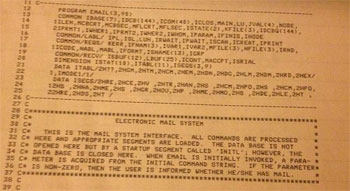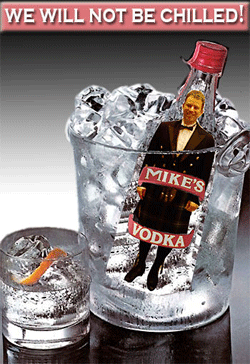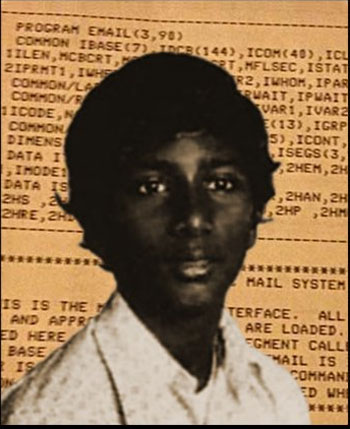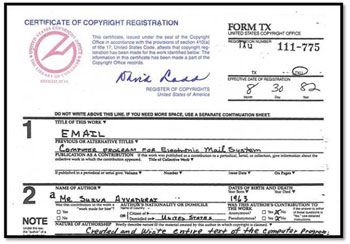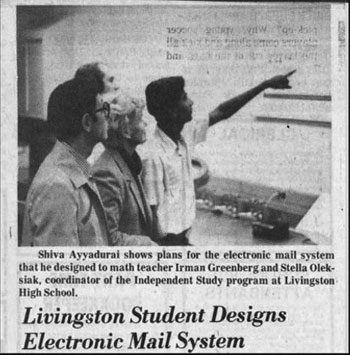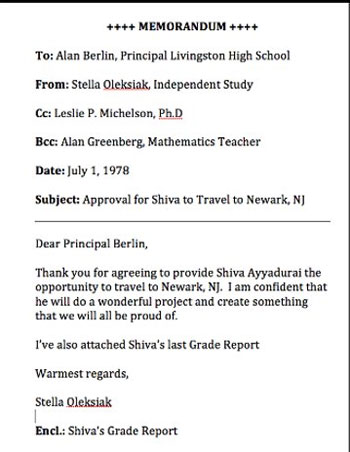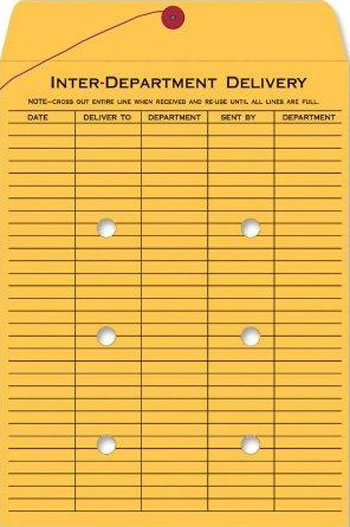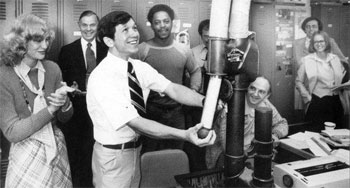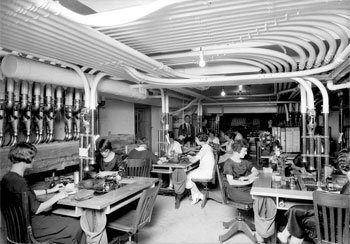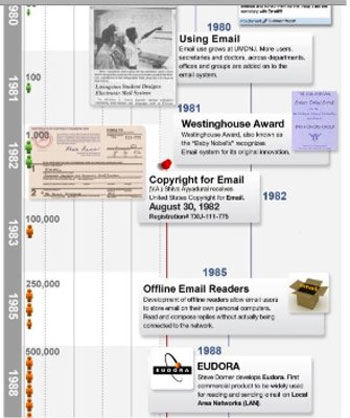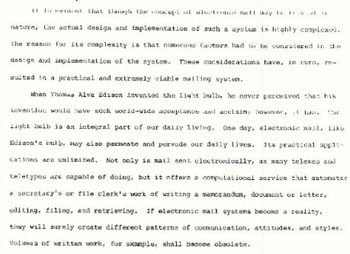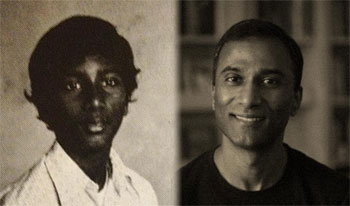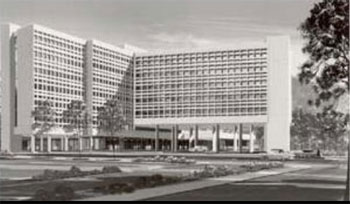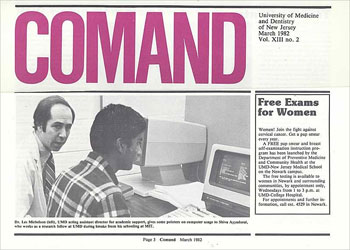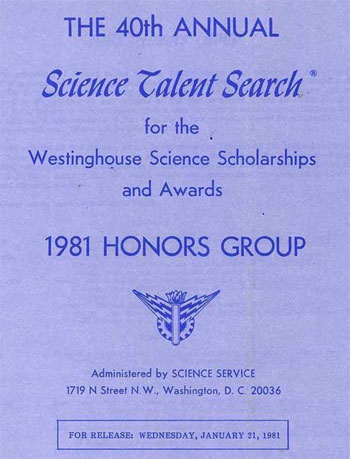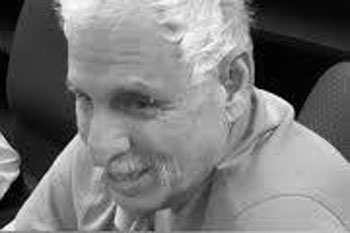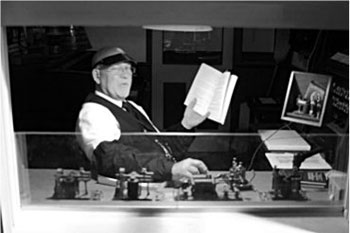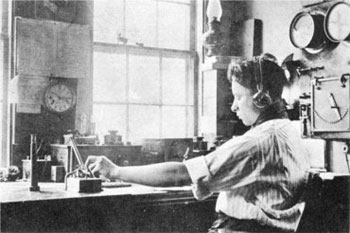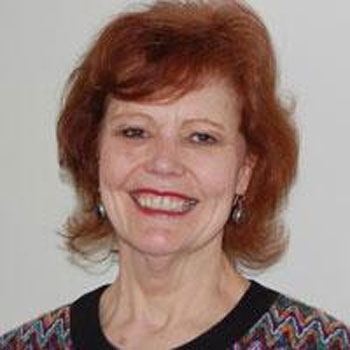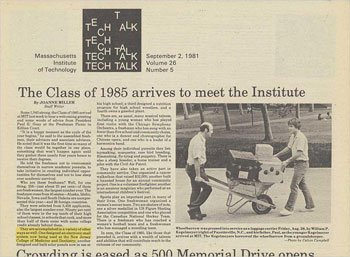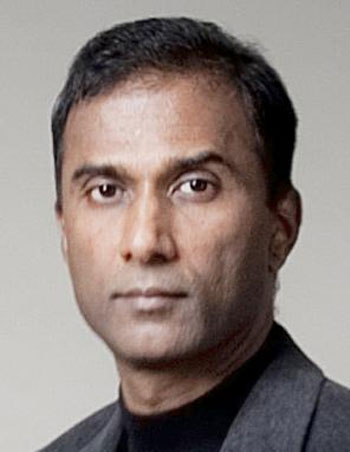By Doug Aamoth
techland.time.com
Nov. 15, 2011
NOTICE: THIS WORK MAY BE PROTECTED BY COPYRIGHT
YOU ARE REQUIRED TO READ THE COPYRIGHT NOTICE AT THIS LINK BEFORE YOU READ THE FOLLOWING WORK, THAT IS AVAILABLE SOLELY FOR PRIVATE STUDY, SCHOLARSHIP OR RESEARCH PURSUANT TO 17 U.S.C. SECTION 107 AND 108. IN THE EVENT THAT THE LIBRARY DETERMINES THAT UNLAWFUL COPYING OF THIS WORK HAS OCCURRED, THE LIBRARY HAS THE RIGHT TO BLOCK THE I.P. ADDRESS AT WHICH THE UNLAWFUL COPYING APPEARED TO HAVE OCCURRED. THANK YOU FOR RESPECTING THE RIGHTS OF COPYRIGHT OWNERS.
If you’re reading this, you’re online and, as such, you probably have an email account. But have you ever wondered about the origins of email? It’s not exactly a cut-and-dried case, as various forms of electronic messaging have been around since the humble telegraph.
I had the opportunity to sit down with V.A. Shiva Ayyadurai, who holds the first copyright for “EMAIL”—a system he began building in 1978 at just 14 years of age. It was modeled after the communication system being used at the University of Medicine and Dentistry in Newark, New Jersey. His task: replicate the University’s traditional mail system electronically.
And with that, email—as we currently know it—was born.
In 1981, Shiva took honors at the Westinghouse Science Awards for his “High Reliability, Network-Wide, Electronic Mail System” and attended MIT later that fall. The copyright for the term EMAIL was granted to Shiva in 1982, after which he won a White House competition for developing a system to automatically analyze and sort email messages. That technology eventually became the basis for EchoMail, a service used by several large businesses.
Here’s the interview:
Q. What’s the backstory of email? How did it all come together?
Shiva: It was purely out of the love of doing it. I was given this opportunity to just program, and this was in 1978 when you couldn’t get a programming job, per se—it was very, very early. I look back on that scene: Here’s a 14-year-old living in New Jersey, and the National Science Foundation put out a call saying they needed to educate the youth on computer programming.
There was a very interesting and visionary computer professor at NYU called Henry Mullish, who was at the Courant Institute of Mathematical Sciences, a very, very prestigious institute. So Henry basically said, “Okay, let’s get 40 high school students in an immersion program trained on seven different programming languages.” And I was one of those 40 selected.
Henry did this interesting thing: He basically taught us all these old programming languages—COBOL, SNOBOL, PL/I—for eight weeks, from June until the end of the summer. So I finished up, and my mom was working at the University of Medicine and Dentistry of New Jersey, which is in Newark—my parents had just come from India five years before and my mom was a mathematician. She introduced me to this guy Les Michelson, who was your typical mad scientist—he had worked at Brookhaven National Labs as a particle physicist.
He was given a room to put his first computer in and start the lab for computer science, which was one computer and one HP mainframe. And Les said, “Hey, would you like to create an electronic mail system?” So I said, “Yeah,” and I was just nodding my head, thinking he meant sending electricity through paper, because this guy’s a particle physicist.
I came back the next day and he said, “Look, I want you to go observe how people send out mail.” Basically, each doctor had an office and the secretary typed the word “memorandum” followed by the “to:”, the “from:”, the subject line, the body, and then any carbon copies or attachments. And Michelson said, “Your job is to convert that into an electronic format. Nobody’s done that before.”
These guys I was working with were in their 50’s and 60’s, and they treated me as an equal. And I think that was a fascinating thing: Here’s a 14-year-old working among 60-year-olds, and it was like there was no difference. That’s why I think innovation takes place in America. In countries like India or China, a Steve Jobs will never come around. The fundamentals aren’t there—there’s this feudal hierarchy. So just in retrospect, I look back and these guys let me into this very collegial atmosphere.
Q. So the original system was set up for doctors to communicate electronically using the template they were already used to.
Shiva: Yeah. The way the University of Medicine and Dentistry was set up was that they had three locations—Newark, Piscataway, and New Brunswick. Within each building, they had those old tubes where you’d put the container in and it’d get shot around to the right place. And I just observed how these guys sent mail out. It was fascinating. The secretary would write something, she’d put the carbon copy—literally a carbon copy—in the container and send it out.
So in order to create a real email system, you needed a relational database and you needed to make it really easy. Even today, if you read a Forrester report, I think 15 or 16 percent of doctors still don’t use e-mail. We had to make a simple user interface: inbox, outbox, folders—those were literally replicas of how these guys communicated using physical mail.
And that’s what I ended up doing in ’78 and ’79. We did one of the early demos and wrote the user manual—all this stuff: training, tutorials—and a lot of it was the cultural piece. How do you get people to convert? Would the doctors use it or would the assistants use it?
I was planning on dropping out of high school because I was just very bored, and one of my teachers urged me not to drop out, telling me about this thing called the Westinghouse Science Contest—I think they call it the Intel Science Awards now. He told me I should apply for it, and the application was “a High Reliability, Network-Wide, Electronic Mail System.”
And so I ended up winning one of the honors awards out of that. It’s only then that I started realizing what the significance was. But when I really noticed it was when I came to MIT in 1981 and on the front page of the paper, they described three students out of the incoming class of a thousand, saying that one of the students designed the first electronic mail system.
Then later, I think it was ’81 or ’82, the RFC protocol was changed to add the “from:”, the “cc:”—those things. So that was an afterthought. But when I refer to electronic mail, it’s literally the conversion of this paper mail into electronic mail. And people still don’t get that definition, so that’s why there’s this confusion. They think it was text messaging, so Facebook or any of these other platforms are going to replace it, right?
Q. Ray Tomlinson is often credited as the inventor of email. Is he credited correctly, in your opinion, or should he be credited for something else?
Shiva: I think that’s the thing that’s sort of resulted in this confusion. Since ’94, people have always said something’s going to kill e-mail—and the latest was text messaging, right? Ray and Tom Van Vleck really did text messaging. In fact, in one of Tom’s early communications he says his boss wouldn’t let him do electronic letters internally, which is actually the mail piece of it. So they were more focused from a messaging standpoint: How do you get a message from point A to point B to manipulate another machine at that more core level?
“The idea of sending ‘letters’ using [the Compatible Time-Sharing System] was resisted by management, as a waste of resources.”
-- Van Vleck, 2001
Q. Where did blind carbon copying come from? Was it a function the doctors were using?
Shiva: Yes, they used to call it “BCC”. Michelson would do this. If he wanted to spread a message, he would “CC” it. If he wanted to let his boss know but he didn’t want other people to know because of certain office politics, he would “BCC” it.
Q. So those functions were in place.
Shiva: Yes, those things were present in the actual office mail systems. That’s what I did. That was “electronic mail,” with the emphasis on the word “mail”—it should really be lowercase E.
Q. It sounds like the system we use today hasn’t changed all that much.
Shiva: Exactly, because the fundamentals of the system came from interoffice mail, which went through decades and decades of development. There’s still the “to:”, the “from:”, the “cc:”, the subject line, the body and the attachments. Attachments were originally called enclosures, because in the physical mail system they’d type “encl.” followed by the enclosure.
Q. Are there parts of email you think could be improved now?
Shiva: I think one of the interesting areas is going to be—and Google+ is sort of doing this—verification of who you are. That security piece. Email marketing firms and some of the large non-profits have set up this thing called Sender ID, so they’ve done it at the IP level—at the server level.
And for video, I think there’s going to be ways that when you produce your email, you’ll be able to produce videos easier. Those are just links and attachments now.
But email, I think, is a mainstay because it’s still a part of that old interoffice mail communication. It has certain properties that are very different than what you do with Twitter or those kinds of media. It’s almost like there’s a kind of operating system of electronic messaging, and above that are these apps. Email is a fundamental application. Twitter is an application because of the way the medium is used for that.
So how is electronic mail going to change? It’s going to really find what it was originally for: business communications, letters—those kinds of things. And then I think you’re going to see this segmentation: quick messaging, colloquial messaging—that’ll be done through text messaging and those kinds of things.
Q. What are your thoughts about the future of email as it pertains to the U.S. Postal Service?
Shiva: In 1997, after I’d started EchoMail, I met with the Postal Service because I could clearly see that the Postal Service needed to be involved in email because there was this whole trust issue.
When we used to go to large companies, they were getting inbound email that they needed to manage—especially on the outbound side. There’s the whole thing with sender verification and spam, and the Postal Service had this huge opportunity right there. I’ve always felt that, even today, the Postal Service has a huge opportunity.
One example is that on the inbound side, many small businesses and mid-market businesses still get inbound email. And even if it’s a low amount of email, if you don’t respond, there’s an 85 percent chance that you could lose your customer. And many of them don’t know how to do it.
If you think about what the Postal Service fundamentally does, those guys are trained to get mail and sort mail—there’s trust verification. The Postal Service could offer at least level-one or level-two support, where a company could say, “Sort my email for me and put it into the right buckets.” Because that’s what most people deal with—the sales leads, the junk, and those kinds of things. Some of it can be automated, but there’s other areas where you can do that sort of semi-automatic piece. And what’s happened in the U.S. now is that companies put in an infrastructure like EchoMail, which does that sorting, and then they have humans that do the second-level review. And most of those humans are overseas.
So companies essentially set up internal email post offices to do that function, and I think that’s a function the Postal Service could offer because you have that trust. It’s a very interesting security issue. You currently have people 10,000 miles away handling all sorts of very, very serious and personal information.
And on the outbound side, the Postal Service now wants to implement this thing called eMailbox, which would take your physical address and associate it with an email address to get all your bills and everything. I like the concept, particularly if you look at email from a legal standpoint. In the U.K. now, you can serve someone through email thanks to a recent court ruling. So I think it opens up all these other things that are sort of in this gray area, since email is currently not associated with a physical address.
Q. Yeah, I currently scan most of my mail just because I want an electronic version of it. It’d be nice to have that done right at the post office level so if I went on vacation, for instance, I wouldn’t have to worry about my mailbox filling up.
Shiva: So that service—they should have done that back in ’97. When I met with them, the goal was, “Well, we’re a $50 billion company. Yeah, email’s there but it’s not that interesting.”
But I think it comes down to that issue that people don’t understand what electronic mail is. It’s this electrification of letters—it’s not just messaging.
Q. Do you think email is killing the Postal Service?
Shiva: There are various factors in the postal system. It’s a large organization and they have some of these policy issues, right? But I think, fundamentally, when you look at the Postal Service, it was literally set up at the time of the inception of the United States. It’s that old—it’s very aligned to democracy. But if you look at Benjamin Franklin, the guy’s an amazing innovator. He set up the logistics of how this thing would work—the different services, the delivery times—the guy was phenomenal.
Fast-forward to 1997 and you see this explosive growth in email. And what do these guys do? They basically didn’t do anything innovative. They basically sort of made tweaks. And even now after this whole eMailbox thing was proposed, their stance is, “Well maybe we should look into it in the future.” So there’s this fundamental lack of commitment to innovation.
It’s a large organization still making revenue. The fact is that because that revenue’s dropping and because email volume’s grown—I think by 60 percent or so—the volume of billing has been taken over by email. So what used to be bills, 60 to 70 percent is now email.
And I think segment by segment, that’s going to occur. So I think that if the Postal Service doesn’t get on board quickly and start offering some of these electronic services, their solution is going to be the standard financial application—lay people off and close branches.
In fact, the former head of the union had written several memos saying the Postal Service should start using the electronic medium, but I think the management fundamentally still views itself as, “We’re Walmart. We’ve got 500,000 people. We have this core business. How do we tweak it with first-class mail?” Those kinds of issues. They’re starting to awaken a little bit, but I think that unless they take a fundamentally innovative approach, they’re going to have problems.
Q. What’s the solution?
Shiva: The solution right now is to lay off 100,000 people. But those 100,000 people—if you think about the mentality they’ve been trained in—have the discipline, by and large, where you could put them on an electronic frontend and have them do electronic services like email sorting.
And the number of companies in the U.S. that need that right now is desperate. There’s a Jupiter report saying 67 percent of companies still don’t manage their inbound mail well. And managing email isn’t an area where you can train people quickly.
The issue is that companies—even large companies—think of email as phone calls. There’s still this lack of understanding about what email is, so they’ll say, “I’m going to take some phone guys and have them answer email for me.” But it’s a different activity. Answering phones synchronously is very different than reading an email, sorting it, figuring out which bucket it goes in, and then responding.
So I think the Postal Service has this huge opportunity. They could use those 100,000 workers and it’s not that much training. U.S. companies do it in 90 days now. They get people who barely speak English, and they train them to sort and process email, and they charge on a per-unit basis. The Postal Service already has physical real estate. They could put terminals in there and offer those services to local businesses, and just brand it as “You have your email. We’ll process it for you and we’ll tell you what your sales leads are.”
Q. So the argument about not wanting the post office reading your email…
Shiva: Somebody’s already reading your email, in this instance. Who’s reading your email? You currently have temporary workers coming in and out. Mid-market companies are outsourcing to a call center, which outsources to the Philippines or India. You already have that going on.
I don’t want to be jingoistic, but this economy has problems. Why are we laying off 100,000 people? It’s absolutely insane, when these people are trained in processing mail. You can move them to the email platform. There’s a huge need.
Q. Same basic sorting process.
Shiva: Same basic sorting process. If Franklin was around, he would have done email. The protocols that he had to put in place—he had to set up individual nodes, set up delivery times, there’s a security issue and there’s the issue of how fast you respond.
This is all the stuff companies face. Companies have service levels now. If you send an email, the company should respond within four hours. Most companies don’t respond within two days. It’s perfect for the Postal Service. It’s a mind-shift for them to think, “Why are we sorting other people’s electronic mail?” But it’s basically taking a trusted service and moving it online.
And I did a calculation: I think they could easily generate $6 billion in revenue. To process an email usually costs around $2 to $3—that’s what outside companies charge now for a small volume of messages once you work in all the overhead. Obviously if you can do more volume, it costs less, and the Postal Service can do it for less because they have so many people. It’s just a killer service that’s waiting there.
Q. What’s the end result? Certain mail gets put in certain folders?
Shiva: Certain folders and you can choose certain responses. You can have your email sorted into various buckets, or you can have the response selected and ready to go. So they could offer two levels of service. One is that they’d prepare a response that you could approve. The other is that if you trust them, they could just send the response out.
If it’s someone asking a billing question that could be handled without intervention: great. Otherwise it could be escalated. This is being done right now by call centers. I don’t believe there’s enough security there—I’ve been in enough of them. They have a 70 percent turnover rate in call centers. I don’t think the Postal Service has that high of a turnover rate.
Similarly, the Postal Service already does a lot of direct marketing. So they could own the direct marketing channel, too, and do more of the verification piece.
Q. So the big issue is getting the Postal Service on board with services like this.
Shiva: Yeah, I think the Postal Service still has an opportunity but the issue is what’s going to incentivize them to do it. I think there’s a lot of thrust to just cut jobs and follow this very mundane economic approach versus being innovative. It’s pretty sad when you really think about the number of people they have trained just sitting there.

